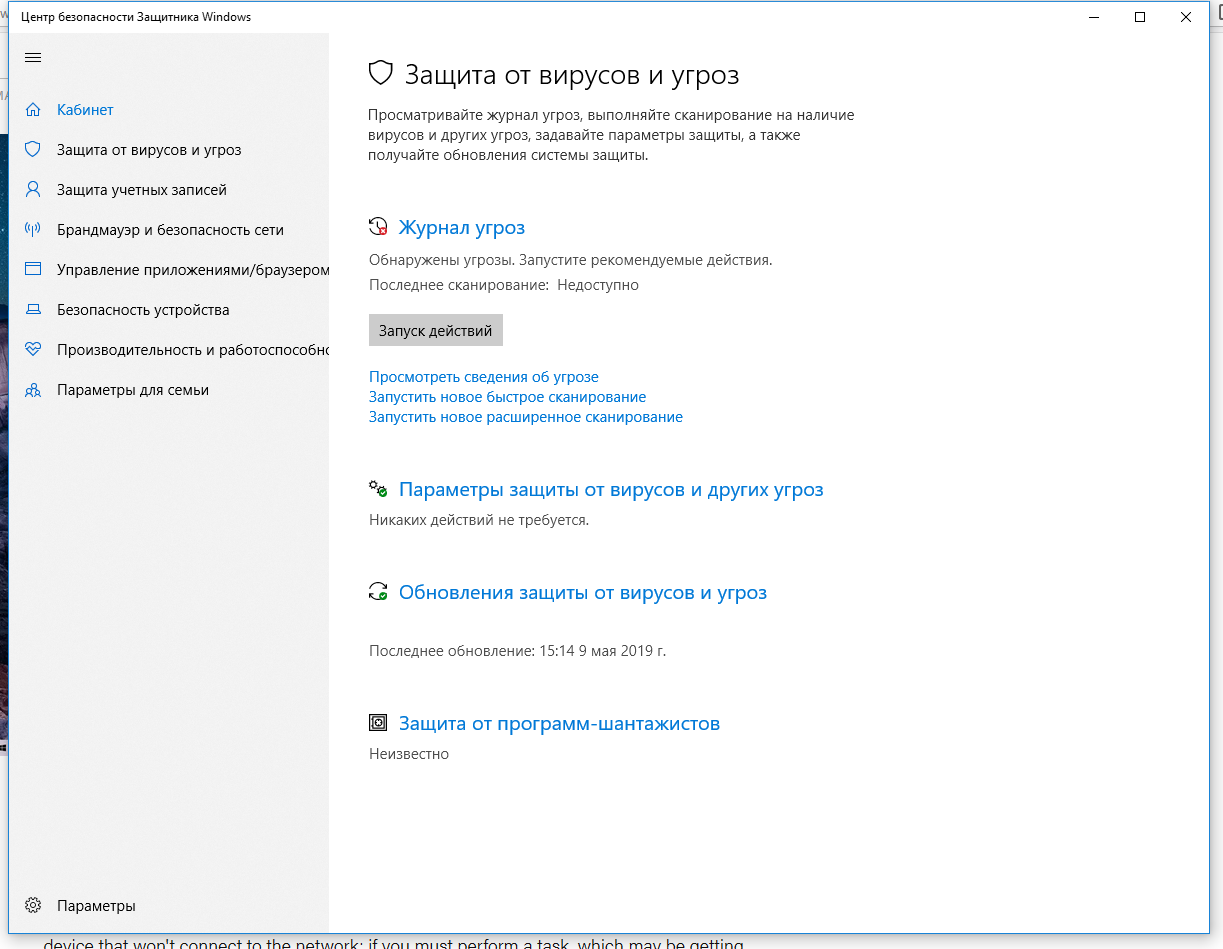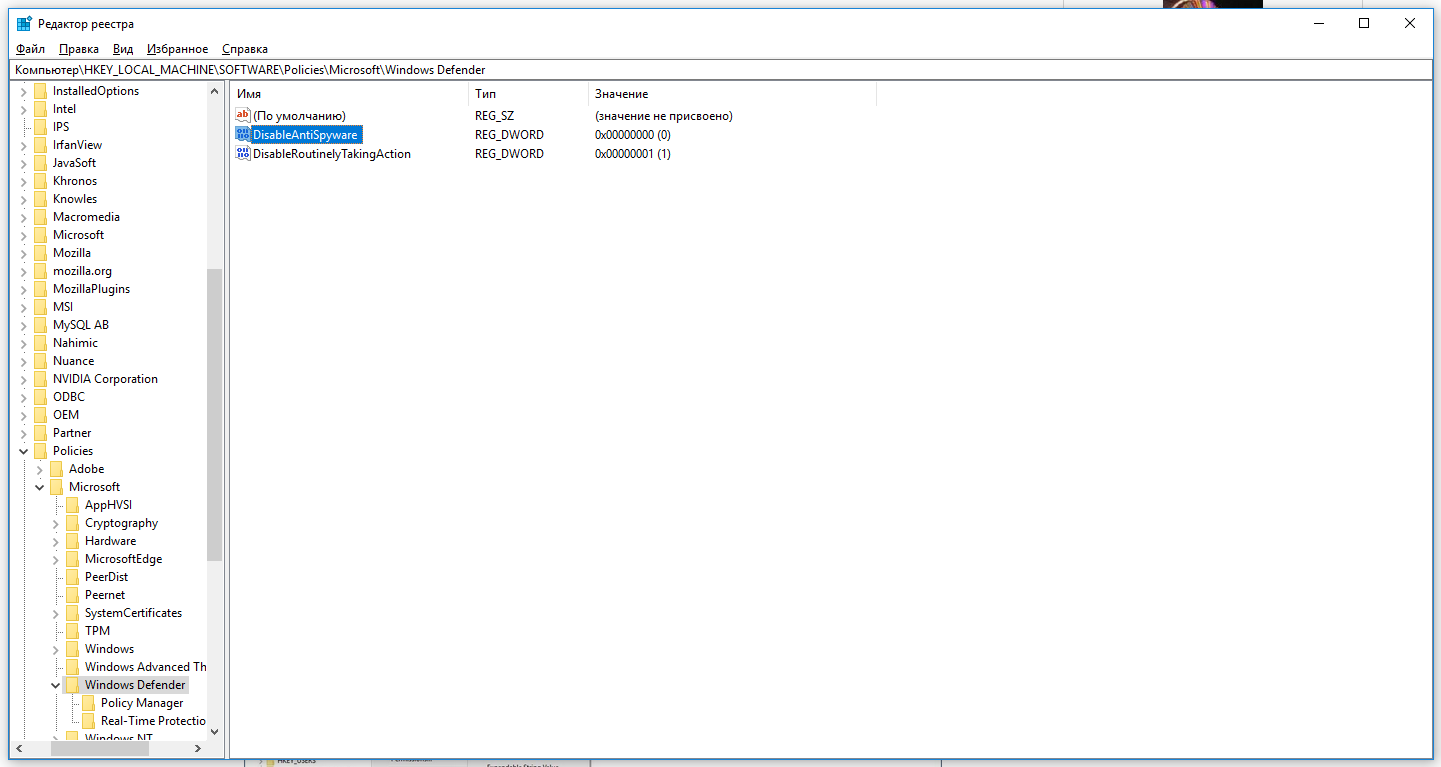How to completely disable Windows Defender on Windows 10
- Transfer

Windows 10 has a built-in Windows Defender antivirus (“Windows Defender”) that protects your computer and data from unwanted programs: viruses, spyware, ransomware, and many other types of malware and hackers.
And although the built-in security solution is enough for most users, there are situations in which you may not want to use this program. For example, if you configure a device that will not go online; if you need to complete a task blocked by this program; If you need to meet your organization’s security policy requirements.
The only problem is that you won’t be able to completely remove or disable Windows Defender - this system is deeply integrated into Windows 10. However, there are several workarounds by which you can disable the antivirus - using the local group policy, registry or Windows settings in the Security section (temporarily).
How to disable Windows Defender through Windows security settings
If you need to perform a specific task, and do not need to completely disable Defender, you can do this temporarily. To do this, using the search in the "Start" button, find the "Windows Defender Security Center" section, and select "Virus and Threat Protection" in it.

There, go to the "Protection against viruses and other threats" section and click on the "Real-time protection" switch.

After that, the antivirus will disable real-time computer protection, which will allow you to install applications or perform a specific task that was not available to you because the antivirus blocked the necessary action.
To enable real-time protection again, restart the computer or go through all the configuration steps again, but turn on the switch in the last step.
This solution is not permanent, but is best suited for disabling Windows 10 Antivirus for a specific task.
How to disable Windows Defender through group policies
In versions of Windows 10 Pro and Enterprise, you can access the local group policy editor, where you can permanently disable Defender as follows:
Run the gpedit.msc executable script through the Start button. The policy editor opens. Go to the following path: Computer Configuration> Administrative Templates> Windows Components> Windows Defender Antivirus.

Double-click to open the option “Turn off the Windows Defender antivirus program.” Select the “Enabled” setting to enable this option, and, accordingly, disable the Defender.

Click “OK” and restart the computer.
After that, the antivirus will be permanently disabled on your device. But you will notice that the icon with the shield will remain in the taskbar - it should be so, because this icon belongs to the Windows Security application, and not to the antivirus itself.
If you change your mind, you can always re-enable Defender by repeating these steps and selecting “Not Set” in the last step, after which you will need to restart the computer again.
How to disable Windows Defender through the registry
If you do not have access to the policy editor, or you have installed Windows 10 Home, you can edit the Windows registry, thereby disabling Defender.
I remind you that editing the registry is risky, and errors in this matter can cause irreparable damage to the currently installed copy of Windows. It is better to backup the system before you start editing.
To completely disable Defender through the registry, run the regedit program through the "Start" button and navigate to the following path:
HKEY_LOCAL_MACHINE \ SOFTWARE \ Policies \ Microsoft \ Windows Defender
Tip: this path can be copied and pasted into the address bar of the registry editor.

Then, right-click on the Windows Defender key (directory), select "New" and DWORD (32-bit) Value. Name the new key DisableAntiSpyware and press Enter. Then double-click to open the key editor and set it to 1.

Click OK, and restart the computer.
After that, Windows Defender will no longer protect your system. If you want to undo these changes, repeat all the steps, but in the end delete this key or set it to 0.
Recommendations
Despite the presence of several methods for disabling Windows Defender, we do not recommend using a computer without anti-virus programs at all. However, you may encounter situations in which disabling this feature would be a better option. And if you install a third-party antivirus program, you do not need to disable Defender manually, because during installation it will shut off automatically.
